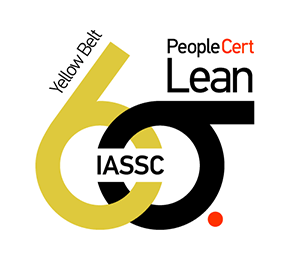We're open through the holidays to support your upskilling goals — book your session today!
We're open through the holidays to support your upskilling goals — book your session today!
Unable to find what you're searching for?
We're here to help you find itIASSC® Certified Lean Six Sigma Yellow Belt™ Course Overview
The Lean Six Sigma Yellow Belt course is designed to provide learners with a solid foundation in the basic principles of Lean and Six Sigma methodologies. It's a Professional Development program aimed at individuals who wish to understand the core concepts of process improvement, Quality Management, and Operational excellence.
Module 1: Define Phase sets the stage, introducing Six Sigma and its importance, covering the fundamentals, and teaching how to select appropriate projects and identify elements of waste. This module concludes with actionable steps to apply the knowledge gained.
Module 2: Measure Phase delves into Quantifying processes, discovering their intricacies, Applying statistics, Analyzing measurement systems, Evaluating process capability, and ends with a summary and action items.
Module 3: Control Phase ensures learners know how to sustain improvements through Lean controls, Defect controls, and the use of Statistical Process Control (SPC). It culminates with the creation of Six Sigma Control Plans.
Upon completion, participants will be equipped to contribute to Lean Six Sigma projects, fostering Continuous improvement within their organizations.
Purchase This Course
USD
View Fees Breakdown
| Course Fee | 2,950 |
|
Total Fees (with exam) |
2,950 (USD) |
USD
View Fees Breakdown
| Course Fee | 2,250 |
|
Total Fees (with exam) |
2,250 (USD) |
USD
View Fees Breakdown
| Flexi Video | 16,449 |
| Official E-coursebook | |
| Exam Voucher (optional) | |
| Hands-On-Labs2 | 4,159 |
| + GST 18% | 4,259 |
|
Total Fees (without exam & Labs) |
22,359 (INR) |
|
Total Fees (with Labs) |
28,359 (INR) |
Select Time
Select Date
| Day | Time |
|---|---|
|
to
|
to |
♱ Excluding VAT/GST
You can request classroom training in any city on any date by Requesting More Information
Inclusions in Koenig's Learning Stack may vary as per policies of OEMs
Scroll to view more course dates
You can request classroom training in any city on any date by Requesting More Information
♱ Excluding VAT/GST
*Inclusions in Koenig's Learning Stack may vary as per policies of OEMs
Suggestion submitted successfully.
Koenig Learning Stack
Inclusions in Koenig's Learning Stack may vary as per policies of OEMs



